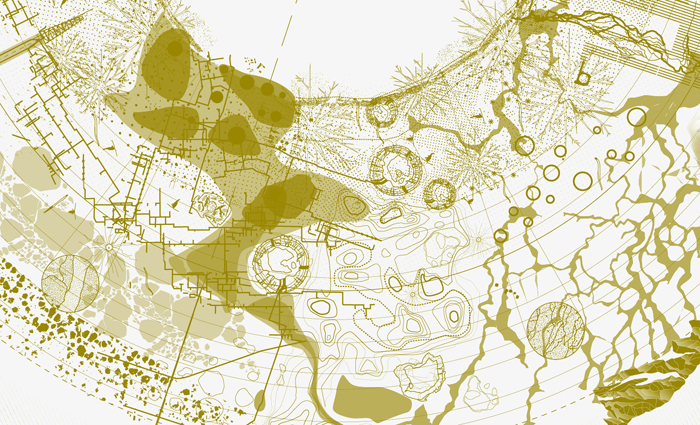Press Release
The exhibition Critical Zones about the critical state of the Earth now coincides with the coronavirus pandemic, evincing core questions of the ecological crisis we are witnessing. This situation requires a new Earthly politics, which also implies new policies for exhibitions.

Critical Zones, Observatories for Earthly Politics
ZKM, Karlsruhe (Allemagne)
23.05.2020 - 28.02.2021

Exhibition May 23, 2020 -
Hence, the physical Critical Zones exhibition currently taking shape on site at the ZKM will be complemented by a digital exhibition platform and thus be connected to a non-
We warmly invite you to the virtual exhibition opening on May 22, 2020 at 7pm.
The opening of the exhibition in the physical space is subject to the further course of the COVID-
Critical Zones
Up to now the “globe” has informed our relationship to the Earth. One astronomical body among myriads of others, divided by lines of latitude and longitude, seen from an impossible perspective from outside and at a distance to us, this image describes our relationship to the world we live in: distant, mechanical, and above all controllable.
The Critical Zones exhibition takes its point of departure from a change of perspective: it exhorts us to recognize that we don’t live on the globe, but within the critical zone, embedded in its multifarious dynamic processes. The term “critical zone” comes from geoscience and describes the fragile layer of the Earth, which is only a few kilometres thin and on which life is created. Bruno Latour has extended the term into the philosophical dimension where it becomes a critical, participatory relationship of ourselves to our lifeworld, whose threatened state has reached an unprecedented scale in the Earth’s now human-
“We must face up to what is literally a problem of dimension, scale, and lodging: the planet is much too narrow and limited for the globe of globalization; at the same time, it is too big, infinitely too large, too active, too complex, to remain within narrow and limited borders of locality whatsoever.” (Bruno Latour)
The focus of the exhibition is the question of what policies we should pursue to ensure that the Earth remains habitable for us. Here we shall follow Alexander von Humboldt who saw that in nature “Everything is connected” and the groundbreaking scientific work of James Lovelock, originator of the Gaia hypothesis, and of Lynn Margulis, its codeveloper. Margulis’s research, and her theory of the symbiotic planet in particular, are highly topical reference points to create common ground via new forms of coexistence and politics.
Together with French philosopher Bruno Latour the ZKM has established an observatory—in the mode of a thought exhibition—which on a small scale presents the diversity of life-
Curatorial team: Bruno Latour and Peter Weibel with Martin Guinard-
Curatorial advisory board: Alexandra Arènes (architect), Bruce Clarke (literary scholar), Jérôme Gaillardet (geochemist), Joseph Koerner (art historian), Daria Mille (curator) and the Critical Zones Study Group of the Karlsruhe University of Arts and Design
Exhibition team: Barbara Kiolbassa (museum communication), Jessica Menger (curatorial assistance)
Further information on the exhibition, click here.
Frédérique Aït-


© ArtCatalyse International / Marika Prévosto 2020. All Rights Reserved